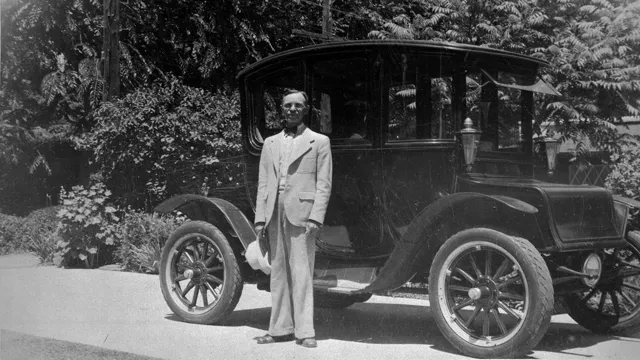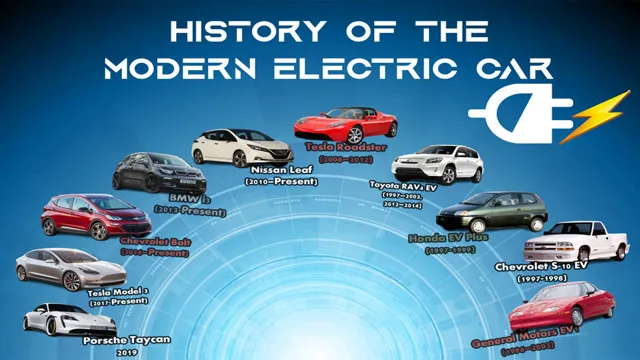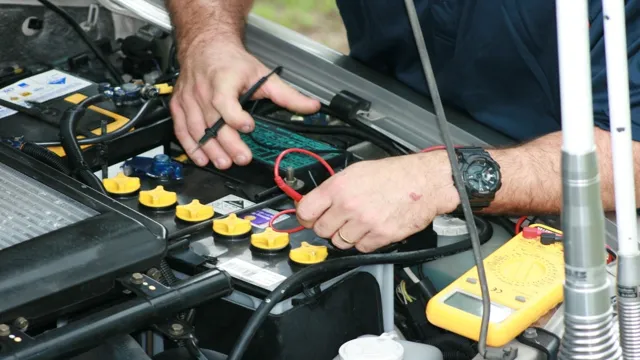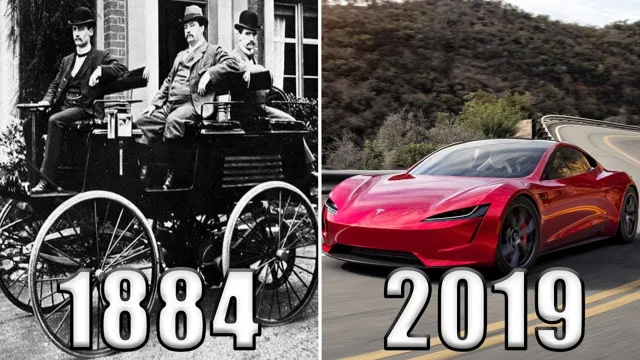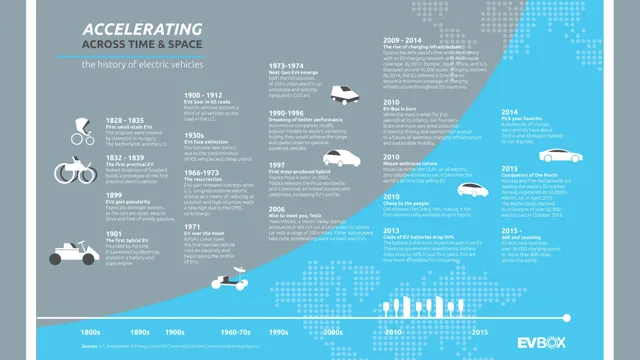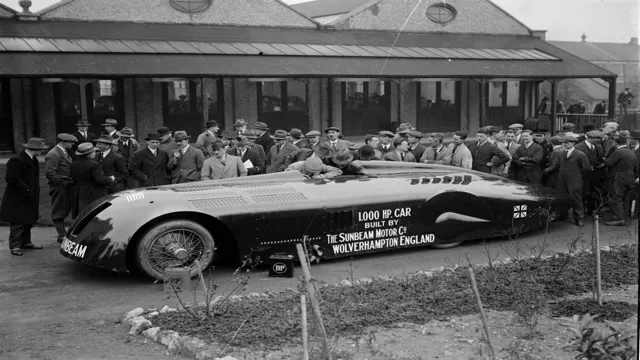The Electrifying Evolution: A Brief History of Electric Cars
Electric cars have been gaining popularity in recent years as the world shifts towards a more sustainable future. But did you know that the concept of electric cars dates back to the 19th century? Yes, you read that right! The first electric car was invented in the 1830s, and since then, there have been remarkable developments in the industry. In this brief history of electric cars, we will explore how these eco-friendly vehicles came to be and how they have evolved over time.
So, buckle up and let’s dive into the electrifying world of electric cars!
Early Beginnings
The concept of electric vehicles dates back to the early 1800s when inventors like Thomas Davenport and Robert Anderson created small-scale electric vehicles powered by primitive batteries. It wasn’t until the late 1800s when the first practical electric vehicle was developed by William Morrison, an American chemist. The vehicle was powered by six storage batteries and had a top speed of around 14 miles per hour.
Over the next few decades, electric vehicles became increasingly popular due to their quiet operation, ease of use, and lack of pollution. In fact, by 1900, electric vehicles made up around one-third of all cars on the road in the United States. However, advancements in gasoline-powered engines and the discovery of vast oil reserves caused electric vehicles to become less popular over time.
It wasn’t until the early 2000s when companies like Tesla began developing high-performance electric vehicles that interest in electric cars started to surge once again. Today, electric cars are becoming increasingly common due to their efficiency, eco-friendliness, and low operating costs.
1832-1839: First Electric Vehicles
Electric Vehicles The history of electric vehicles dates back to the early 1830s when Robert Anderson from Scotland invented the first crude electric carriage. This carriage was powered by non-rechargeable primary cells and had limited range. A few years later, Thomas Davenport from Vermont invented the first electric motor, which he used to power a small model car.
However, it was not until the 1830s that serious work began on electric cars. In 1835, Thomas Parker, a British inventor, made the first practical production electric car, which he drove on the streets of London. The car could carry six passengers and could run at speeds of up to 20 miles per hour.
It was powered by a rechargeable battery that he had designed himself. These early electric cars were slow, heavy, and impractical, but they paved the way for the development of more advanced electric vehicles in the future. Though it took several decades for electric vehicles to become mainstream, the early beginnings were the foundation for the road to the future of EVs.
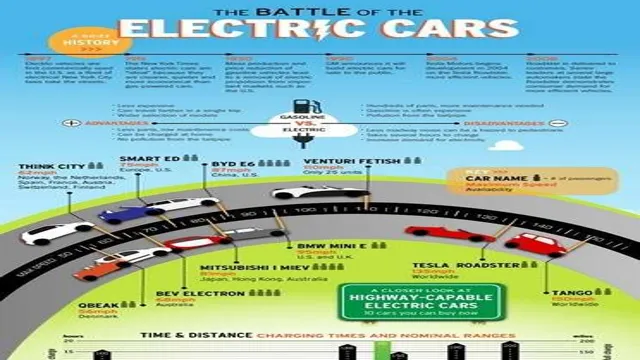
1859-1870: Advances in Battery Technology
During the years from 1859 to 1870, there were incredible advances in battery technology that would pave the way for modern-day batteries. The early beginnings of battery development during this time showed the potential for creating portable sources of electrical power. One of the most significant breakthroughs was the invention of the lead-acid battery, created by French physicist Gaston Planté in 185
The lead-acid battery marked the first time that a rechargeable battery could store energy and release it as needed, opening up new possibilities for electrical systems. This invention was especially important during a time when telegraph communication was expanding rapidly, and energy storage solutions were in high demand. The lead-acid battery also offered a lower cost and larger capacity than previous battery types, making it more practical for everyday use.
With these early advances in battery technology, a new era of portable energy had dawned, and the impact of this innovative breakthrough would continue to grow in the years to come.
The Rise and Fall of Electric Cars
The history of electric cars is a testament to the cyclical nature of innovation. Electric cars were initially popular at the turn of the 20th century, with some of the earliest models being developed in the late 1800s. However, the development of gasoline-powered cars eventually led to a decline in the popularity of electric cars.
It wasn’t until the 1990s that electric cars once again gained popularity, this time as a response to growing concerns about climate change and energy security. Companies like Tesla have since led the charge in developing electric cars with longer ranges and faster charging times. Despite the progress that has been made, electric cars still face a number of challenges, including high costs and limited infrastructure.
However, many believe that electric cars will eventually replace gasoline-powered cars as the dominant form of transportation, particularly as renewable energy sources become more widespread.
1890-1920: Popularity and Competition with Gasoline Cars
During the late 1800s and early 1900s, electric cars emerged as a popular form of transportation. They offered a quiet and clean alternative to the noise and pollution of gasoline cars. By 1900, electric cars made up about one-third of all vehicles on the road.
However, their popularity began to decline as gasoline cars became more affordable and accessible. Gasoline cars had a longer range and were able to travel faster than electric cars, giving them a competitive edge. Additionally, the discovery of oil in Texas in 1901 led to lower gasoline prices, making them a more attractive option for consumers.
By the 1920s, electric cars had virtually disappeared from the market. Despite their initial success, the limitations of early battery technology prevented electric cars from achieving the same level of performance as gasoline cars. Nevertheless, the popularity of electric cars in the early 20th century foreshadowed the recent resurgence of interest in electric vehicles as a cleaner and more sustainable form of transportation.
1920-1960s: Decline in Electric Cars
From the 1920s to the 1960s, electric cars saw a significant decline in popularity, leading to their near extinction. Back then, the electric car faced a lot of challenges, such as limited driving range, high cost, and impracticality. Most households had one car, which they used for both short and long distances, and gas-powered cars were deemed more practical and affordable.
Additionally, oil companies started lobbying against electric cars, and gasoline became significantly cheaper, making it more accessible to the masses. This led to the eventual downfall of the electric car market. However, fast forward to the 21st century, and electric cars are making a comeback due to growing concerns for the environment, advancements in technology, and government regulations, with companies like Tesla, Nissan, and Chevrolet leading the way.
1970s-1980s: Revival of Electric Cars
During the 1970s and 1980s, there was a renewed interest in electric cars as people became increasingly concerned about the impact of fossil fuels on the environment. However, despite some promising developments, electric cars did not gain widespread popularity. One of the main reasons for this was the limitations of the batteries used to power them.
These early batteries were heavy, expensive, and had a limited range. As a result, electric cars were largely seen as impractical and not worth the investment. Nonetheless, there were some notable electric car models developed during this time, such as the GM EV1 and the Toyota RAV4 EV.
Although these vehicles were only produced in limited numbers, they were an important stepping stone in the development of electric cars. Unfortunately, the rise of electric cars was quickly overshadowed by the popularity of gas-guzzling SUVs in the 1990s and early 2000s, and electric cars were once again relegated to a niche market. However, the lessons learned during this period paved the way for the electric car revolution that we are seeing today.
Modern Electric Cars
A brief history of electric cars is necessary to understand the advancements that have been made in modern electric vehicles. The first electric vehicle was created in the 1830s by Robert Anderson, but it wasn’t until the 1890s that electric cars became more popular than gasoline-powered vehicles. However, due to the development of mass-produced gasoline cars, electric cars were largely phased out by the 1920s.
It wasn’t until the 1990s that electric cars began to make a comeback, with models such as the GM EV1 and the Toyota RAV4 EV hitting the market. Nowadays, electric vehicles have become more practical and affordable, with companies like Tesla leading the charge in creating luxurious, high-performance electric cars that can go hundreds of miles on a single charge. As more people begin to realize the environmental and economic benefits of electric vehicles, it is likely that these cars will become the norm rather than the exception in the near future.
1990s-Present: Advancements and Popularity
In the 1990s, advancements in technology allowed for the creation of modern electric cars. These vehicles utilize rechargeable batteries as their primary power source, providing a clean and efficient mode of transportation. Over the past few decades, the popularity of electric cars has grown significantly, driven by concerns over climate change and the desire for more sustainable living.
As technology continues to evolve, electric cars are becoming more practical and affordable for the average consumer. Many major automakers have launched their own electric models, ranging from compact city cars to luxury sedans and SUVs. Additionally, governments around the world are offering incentives and subsidies to encourage the adoption of electric vehicles.
With their zero emissions and quiet operation, electric cars represent the future of transportation as we work towards a more environmentally-friendly world.
Tesla’s Contribution to Electric Cars
When it comes to modern electric cars, Tesla has undoubtedly played a significant role in advancing the technology. With their sleek and stylish designs, convenient charging options, and advanced features, Tesla has made electric cars more accessible, practical, and desirable for consumers. In addition to designing and manufacturing electric cars, Tesla has also been instrumental in developing the infrastructure necessary to support electric cars.
Thanks to Tesla’s Supercharger network, electric car owners can now travel greater distances without worrying about finding a charging station. Moreover, by making their patents available to the public, Tesla has encouraged other manufacturers to invest in electric car technology, further driving innovation in the industry. As a result, Tesla has not only contributed to the growth of the electric car market but has also helped to reduce greenhouse gas emissions and combat climate change.
The Future of Electric Cars
The brief history of electric cars can be traced back to the late 1800s, when inventors began experimenting with battery-powered vehicles. However, it wasn’t until the 1990s that electric cars started gaining significant traction in the market. They faced several challenges, including limited range and lack of charging infrastructure.
But with advancements in technology, electric cars are becoming more accessible and efficient. Today, electric cars are seen as a viable alternative to traditional gasoline-powered vehicles, with many automakers investing heavily in their development. As we look to the future, electric cars are expected to continue to grow in popularity, with more affordable models and a wider range of charging options.
And with the push towards renewable energy sources, electric cars are poised to become an even more sustainable and responsible choice for transportation.
Conclusion
As we bring the final chapter of the brief history of electric cars to a close, we can see a clear trend emerging. From their humble beginnings in the late 19th century, electric cars have steadily but surely gained traction as a viable alternative to their petrol-guzzling cousins. While early models may have been impractical and short-lived, advancements in technology have allowed for electric cars to become a practical and sustainable option for environmentally conscious drivers everywhere.
And with efforts being made to improve infrastructure to accommodate the growing demand for electric cars, we can foresee a future where they become the norm rather than the exception. So, if you’re ready to join the electric movement, buckle up – the ride is going to be electrifying!”
FAQs
When were electric cars first invented?
Electric cars were first invented in the 1830s.
What was the first electric car to be mass-produced?
The first electric car to be mass-produced was the Baker Electric, which was produced from 1899-1916.
How have advancements in battery technology impacted the development of electric cars?
Advancements in battery technology have greatly impacted the development of electric cars, making them more efficient, with longer ranges and faster charging times.
What are the environmental benefits of using electric cars?
Electric cars produce zero emissions, reducing air pollution and greenhouse gas emissions, and are also much quieter than traditional gasoline-powered cars.
